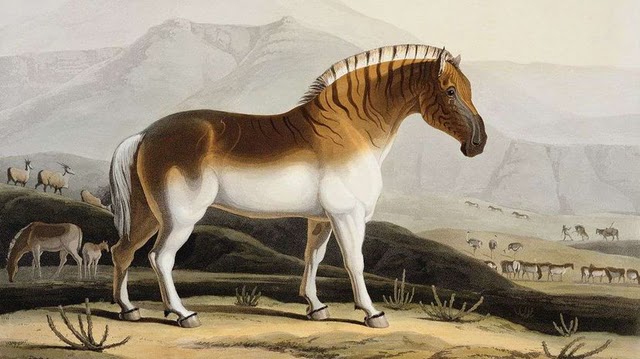Quck answer
The Quagga, a sub-species of zebra that went extinct in the late 19th century, is being revived through selective breeding. Scientists are using DNA samples from preserved Quagga specimens to identify and isolate the genetic traits that made the Quagga unique. By selectively breeding zebras with these traits, they hope to eventually create a population of animals that closely resemble the original Quagga. This process is known as de-extinction and is a controversial topic in the scientific community. Some argue that it is unethical to “play God” with nature, while others believe that it is necessary to preserve endangered species and restore damaged ecosystems.
Extinct Animals

The last quagga mare died at the Amsterdam Zoo on August 12, 1883, marking the end of the quagga, a subspecies of the plains zebra (Equus quagga), which had a unique striping pattern. The quagga had a darker brown background color than a typical zebra and was once found in large herds in South Africa before being hunted into extinction. However, the Quagga Project at a private nature reserve near Cape Town, South Africa, has been able to revive the quagga, or at least a zebra that closely resembles it. By studying DNA evidence from the preserved coats of quaggas, scientists discovered that the quagga’s genetics might still be present in the DNA of plains zebras that inhabit South Africa. From a herd of plains zebras, 19 animals that retained quagga traits were collected for a breeding program, and during the next three decades, they were selectively bred to emphasize the quagga’s color traits. The breeding program has produced animals that increasingly resemble quaggas, but some nuanced behavioral or other traits may be irretrievable from the extinct species. Therefore, this resurrected sub-species is known as the rau-quagga, after Reinhold Rau, one of the project’s original creators. There are presently 100 animals in the breeding program, with six offspring carrying the traits to be called a rau-quagga. The goal is to have 50 rau-quaggas in a self-sustaining herd.В
Now That’s Tragic
In 1886, the Cape Town government enacted legislation to protect the quagga from extinction, three years after the last existing quagga died in an Amsterdam zoo. Oops.
FAQ
1. What is the Quagga?
The Quagga was a sub-species of the plains zebra that went extinct in the late 19th century. It was native to South Africa and had a unique coat pattern, with stripes only on the front half of its body.
2. How is the Quagga being revived?
The Quagga Project is a breeding program that aims to recreate the Quagga by selectively breeding plains zebras with Quagga-like characteristics. The program started in 1987 and has been successful in producing zebras with Quagga-like stripes on their hindquarters.
3. Why is the Quagga being revived?
The Quagga is being revived for several reasons, including conservation and scientific research. By recreating the Quagga, scientists can learn more about the genetics and evolution of the species, and the program also helps to raise awareness about the importance of conservation efforts.
4. How many Quaggas have been recreated so far?
As of 2021, over 130 zebras with Quagga-like traits have been bred through the Quagga Project.
5. Are the recreated Quaggas genetically identical to the original species?
No, the recreated Quaggas are not genetically identical to the original species. The breeding program uses plains zebras as the base stock, and while they are selectively bred to have Quagga-like traits, their genetics are still different from the original Quagga.
6. Where can I see a recreated Quagga?
Recreated Quaggas can be seen at several wildlife parks and reserves in South Africa, including the Cape Point Nature Reserve and the Karoo National Park.
7. Can the Quagga be reintroduced into the wild?
It is unlikely that the Quagga can be reintroduced into the wild, as their natural habitat has been severely altered since their extinction. However, the breeding program helps to preserve the genetic legacy of the species and raises awareness about the importance of conservation.
8. How do scientists know what the Quagga looked like?
Scientists have used preserved specimens of the Quagga, including skins and skeletons, to study the species’ physical characteristics and coat pattern. They have also analyzed DNA from the specimens to learn more about the genetics of the species.
9. What are some challenges faced by the Quagga Project?
The Quagga Project faces several challenges, including genetic diversity, as the breeding program relies on a limited number of plains zebras with Quagga-like traits. The project also requires a lot of resources and funding to maintain the breeding program and care for the animals.
10. What can I do to support the Quagga Project?
You can support the Quagga Project by visiting wildlife parks and reserves that have recreated Quaggas and learning more about the species and the importance of conservation efforts. Donations to the project are also appreciated and can help to fund the breeding program and care for the animals.
11. What is the future of the Quagga Project?
The Quagga Project will continue to work towards recreating the Quagga and raising awareness about conservation efforts. The program also aims to study the genetics and evolution of the species and contribute to scientific research.





Leave a Reply